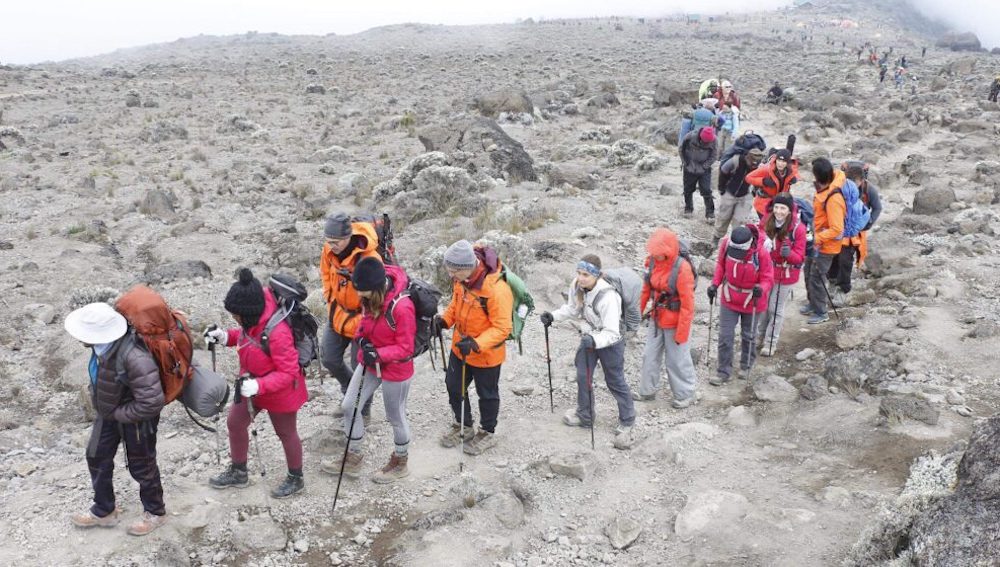Mount Kilimanjaro is the tallest mountain in Africa, with Uhuru being the highest point on the African continent, and this has made it one of the top bucket list destinations for many tourists. A Kilimanjaro climb is not an easy fit, regardless of the hiking route you are using, but with the right preparation and team, you can still make it to the summit. seven routes can be used to climb Mount Kilimanjaro, with each of these having its advantages and disadvantages. So, Which is the best route to climb Kilimanjaro? Choosing the best Kilimanjaro route to use depends on several factors, like what you would like to experience while hiking, your level of preparedness, prior climbing experience, the acclimatization process, the cost of the hike, and your accommodation. Below is a list and breakdown of each of the hiking routes. Factors that determine which route is best for you on Mount KIlimanjaro. Which is the most scenic route on Mount Kilimanjaro? Answer: Lemosho Route is the most scenic. The route starts from the west, is the most scenic route among all the routes since it offers spectacular views of the mountain from different directions. If you want the highest chance of summiting Uhuru peak, the best route to climb Kilimanjaro is the Lemosho route and Machame route for 7 or 8 days. These give excellent acclimatization and an easier summit night. Most challenging route? Answer: Staying at the crater camp is the best option if you are looking at the most challenging route because almost 1% of the hikers make it to the summit, and you need special permission to use this route. Which is the quietest route? The Rongai route is the quietest route on Mount Kilimanjaro, and it is the only route that approaches the mountain from
Mount Kilimanjaro is the tallest mountain in Africa, with Uhuru being the highest point on the African continent, and this has made it one of the top bucket list destinations for many tourists. A Kilimanjaro climb is not an easy fit, regardless of the hiking route you are using, but with the right preparation and team, you can still make it to the summit. seven routes can be used to climb Mount Kilimanjaro, with each of these having its advantages and disadvantages.
So, Which is the best route to climb Kilimanjaro? Choosing the best Kilimanjaro route to use depends on several factors, like what you would like to experience while hiking, your level of preparedness, prior climbing experience, the acclimatization process, the cost of the hike, and your accommodation. Below is a list and breakdown of each of the hiking routes.
Factors that determine which route is best for you on Mount KIlimanjaro.
Which is the most scenic route on Mount Kilimanjaro?
Answer: Lemosho Route is the most scenic. The route starts from the west, is the most scenic route among all the routes since it offers spectacular views of the mountain from different directions.
If you want the highest chance of summiting Uhuru peak, the best route to climb Kilimanjaro is the Lemosho route and Machame route for 7 or 8 days. These give excellent acclimatization and an easier summit night.
Most challenging route?
Answer: Staying at the crater camp is the best option if you are looking at the most challenging route because almost 1% of the hikers make it to the summit, and you need special permission to use this route.
Which is the quietest route? The Rongai route is the quietest route on Mount Kilimanjaro, and it is the only route that approaches the mountain from the north.
The most popular route on Kilimanjaro?
Answer: It is Machame is the most popular Kilimanjaro route.
Which is shortest route to climb Mount Kilimanjaro?
Answer: It is Umbwe is the shortest, hardest, and steepest route on Kilimanjaro.
Which route on Kilimanjaro has the best Accommodation?
Answer: It is Marangu, which is the only route that offers hut accommodation.
Which route on Kilimanjaro has the Acclimatization?
Answer: Machame, Lemosho, and the Northern Circuit offer the best acclimatization to hikers.
Marangu Route: 70 km
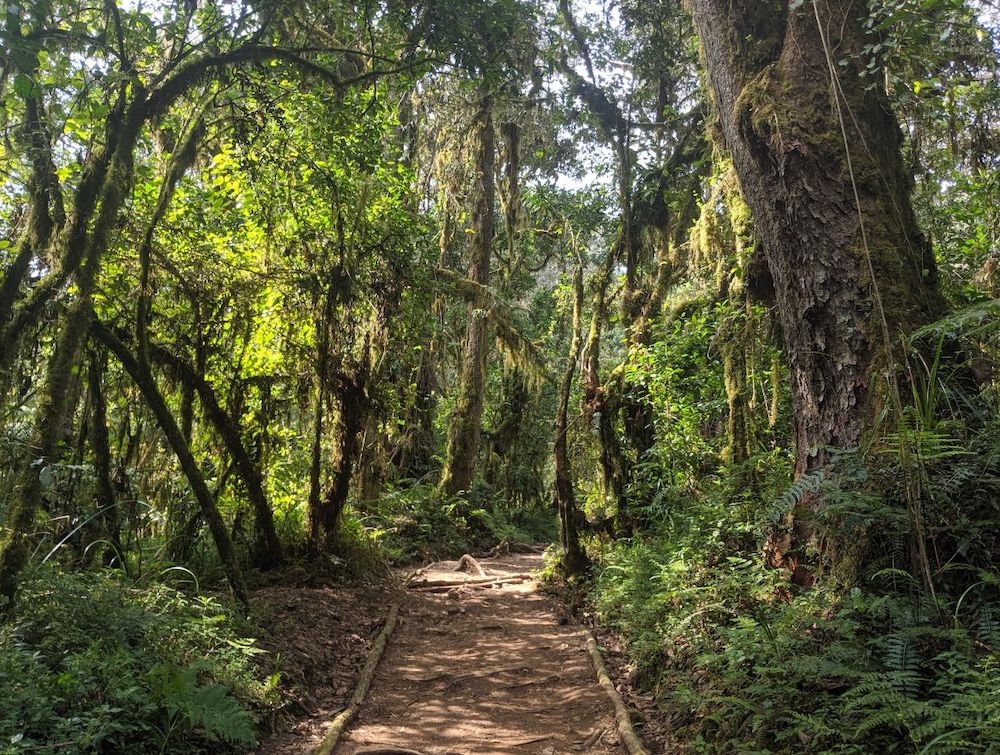 This is commonly known as the Coca-Cola route (because Coca-Cola soda used to be sold in all the dormitory huts along the route) or the tourist route due to its popularity among tourists because many believe that it is the easiest route on Mount Kilimanjaro. The Marangu route is the oldest and the only route on the mountain that has dormitory-style huts, unlike others where only camping can be carried out.
This is commonly known as the Coca-Cola route (because Coca-Cola soda used to be sold in all the dormitory huts along the route) or the tourist route due to its popularity among tourists because many believe that it is the easiest route on Mount Kilimanjaro. The Marangu route is the oldest and the only route on the mountain that has dormitory-style huts, unlike others where only camping can be carried out.
At a distance of 70km, the Marangu route can be hiked in five or six days with a steady and gradual climb. The beauty of using the Marangu route is that hikers can get to the summit in a short period and have good accommodations.
The downsides of using the Marangu route include not being more scenic since you have to use the same route for the ascent and descent, being always crowded, especially during the peak season, not offering proper acclimatization, causing altitude sickness symptoms, and having a low success rate.
If you are not a fan of camping throughout the week and do not mind crowds, then the Marangu route is the best option for you.
Rongai route: 74 km
Starting from the north of Mount Kilimanjaro, Rongai is the easiest route on the mountain and the most preferred to use during the wet season since it receives little or no rainfall. It is one of the shorter hikes up Mount Kilimanjaro because it ascends much faster compared to other routes. It still has low traffic, although it is gaining popularity with hikers who would wish to hike in a remote and quiet environment away from the busy and more crowded routes.
Rongai’s scenery is not as varied as the routes in the west, but it makes up for it as it goes through the wilderness, giving hikers a chance to spot a few wild animals. It is a moderately difficult hike taking a minimum of either six or seven days (we highly recommend seven days), and it is recommended for hikers with less hiking experience. The Rongai route does not offer proper acclimatization as it does not usually follow the climb-high and sleep-low pattern, comes with a fully catered camping experience, and has an extremely tough hike on summit day.
Umbwe route: 48 km
The Umbwe Route is the shortest hike on Mount Kilimanjaro and, at the same time, the most difficult hike, which should only be attempted by hikers who have enough experience with altitude hiking and are confident. Umbwe is a steep climb and does not offer proper stages of acclimatization, which makes the summit success rate very low. It is a rarely used hike that can be hiked in five or seven days, comes with low traffic, and we usually discourage hikers from using this route.
Lemosho route: 67 km
The Lemosho route is one of the most recently introduced routes on Mount Kilimanjaro and is almost similar to the Shira route since it was introduced to make a better starting point for hikers who were using the Shira route, which starts at a high altitude. The Lemosho route starts from the west, crossing the Shira ridge to Shira camp, and for the first few days, hikers encounter traffic and only start meeting other hikers when they join the Machame route.
This is considered to be the most beautiful Kilimanjaro route, where hikers get panoramic views of the mountain from different angles. It is a highly recommended route that has a high success rate, a good and proper acclimatization process with the climb high and sleeps low process, great scenery, and low traffic.
Northern circuit: 88 km
The Northern Circuit is a highly recommended route for all hikers, has the highest success rate, and is the longest route on Mount Kilimanjaro with an 88-kilometer distance. This is the most recently introduced route approaching the mountain from the west, and the hike follows the Lemosho route at the start (first two days), but unlike Lemosho, which follows the southern side, the northern circuit branches and follows the rarely used and hiked northern slopes.
The Northern Circuit can be hiked in eight or nine days, offering hikers good acclimatization with the climb-high and sleep-low process. The route has a low number of hikers, and the beautiful scenery makes it one of the best routes to use for a Kilimanjaro hike.
Shira route: 58 km
Also approaching Mount Kilimanjaro from the west, the Shira route was the original route before the introduction of the Lemosho route to improve the starting point of the hike and add variation. Shira is a more varied route as compared to the Lemosho route; however, we recommend the Lemosho route over the Shira route because the former offers better acclimatization and hikers start getting altitude sickness symptoms right from the first day of the hike, which starts at around 3600m above sea level.
Shira Route can be hiked in six or seven days, but we highly recommend the seven days for proper acclimatization. And although there are fewer people on the Shira route as compared to the Machame trail, Shira is still more expensive.
Machame route: 61 km
Also known as the Whiskey Routes, Machame is one of the most popular routes on Mount Kilimanjaro, more difficult than the Marangu route, and one that we highly recommend. It is a hiking route that is best suited for adventurous hikers and those who have prior experience with steeper mountain climbs. The route is good for acclimatization because you get to climb high and sleep low, you get to take on the Barranco Wall, and it is the route that will take you to the highest point on the African continent.
The Machame Route starts from the south, with the hike continuing to the east through the different zones before summit day. It offers beautiful scenery; the minimum number of days it can be hiked is 6 and 7, with the 7 days being highly recommended. Due to the heavy traffic experienced on the Machame route, especially during the dry season, the route becomes too crowded, losing some of its splendor.
Whichever route you decide to use, make sure that you are mentally and physically prepared for the hike. To have a successful climb, you should have the right hiking gear, hike slowly, and acclimatize to avoid altitude sickness.
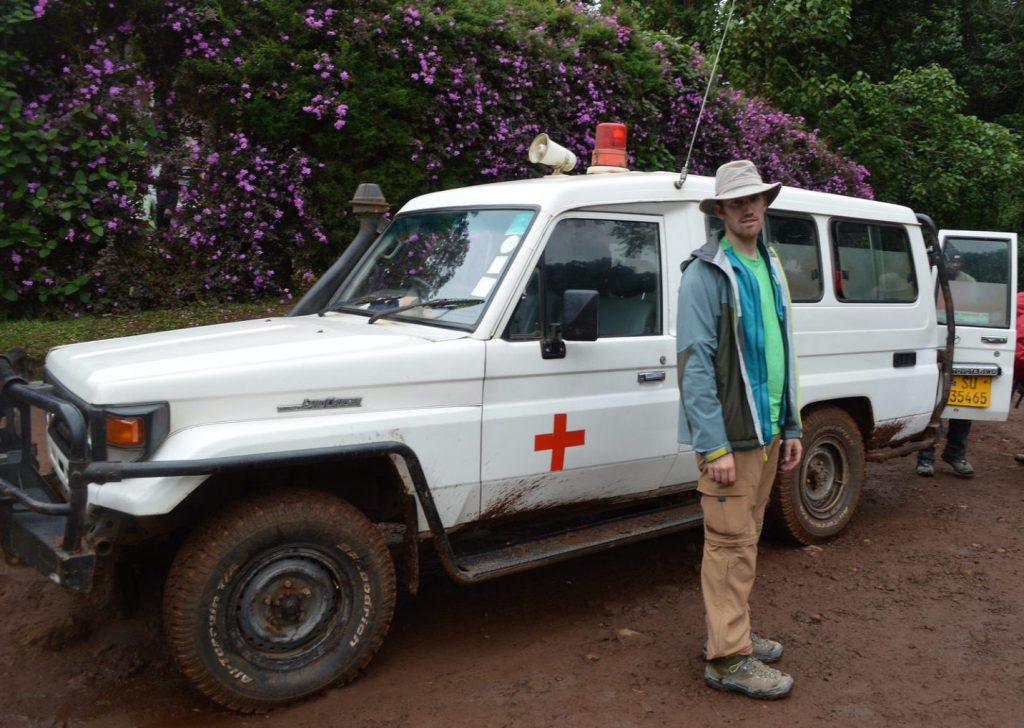 Occupation hazards happen everywhere in the world, and the same applies to Mount Kilimanjaro. Some of how you can avoid tragic moments like death include the following:
Occupation hazards happen everywhere in the world, and the same applies to Mount Kilimanjaro. Some of how you can avoid tragic moments like death include the following: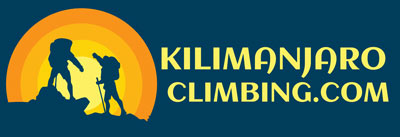
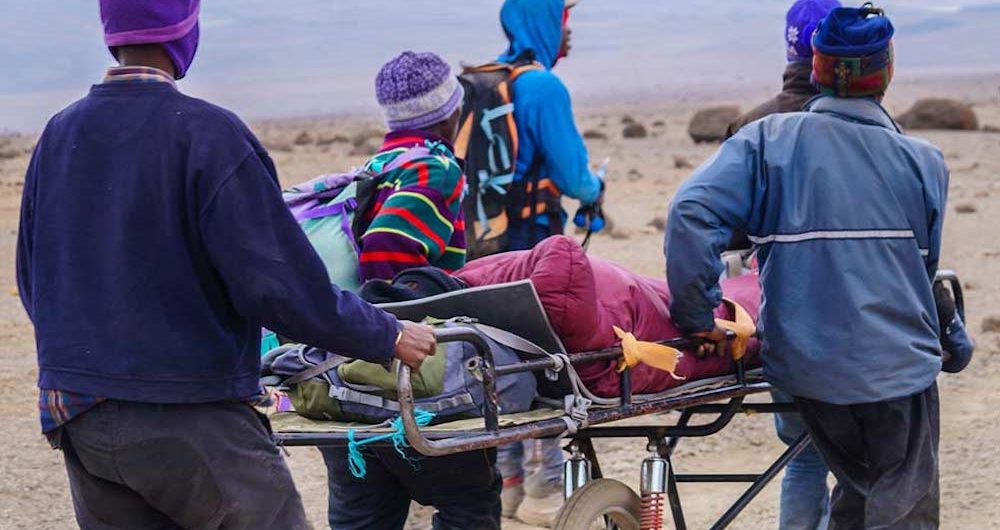
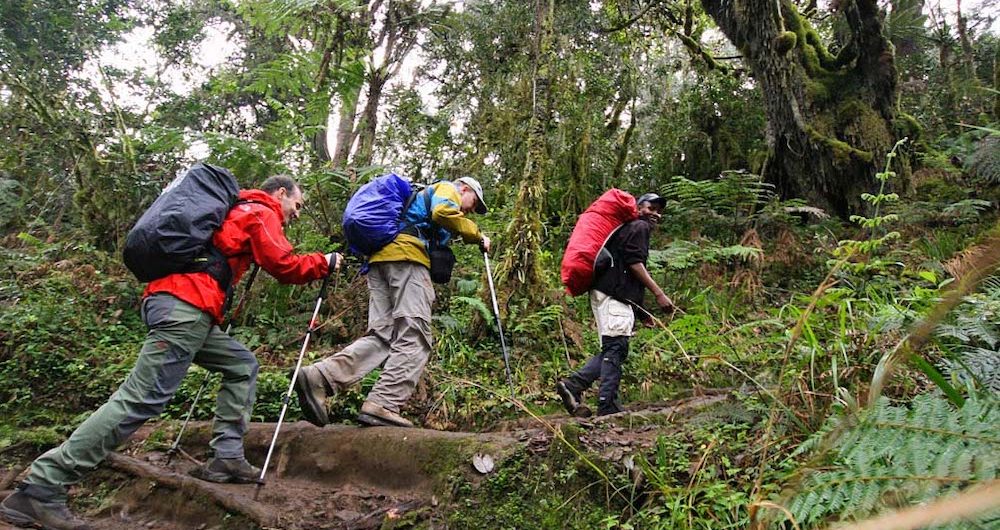
 This is commonly known as the Coca-Cola route (because Coca-Cola soda used to be sold in all the dormitory huts along the route) or the tourist route due to its popularity among tourists because many believe that it is the easiest route on Mount Kilimanjaro. The Marangu route is the oldest and the only route on the mountain that has dormitory-style huts, unlike others where only camping can be carried out.
This is commonly known as the Coca-Cola route (because Coca-Cola soda used to be sold in all the dormitory huts along the route) or the tourist route due to its popularity among tourists because many believe that it is the easiest route on Mount Kilimanjaro. The Marangu route is the oldest and the only route on the mountain that has dormitory-style huts, unlike others where only camping can be carried out.